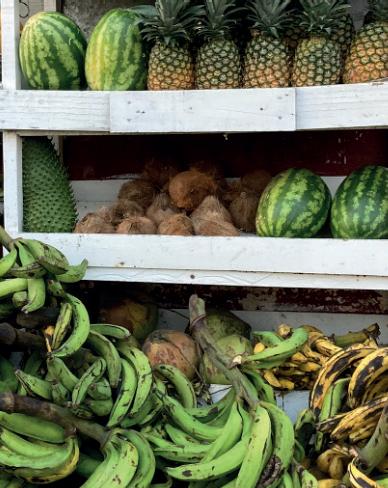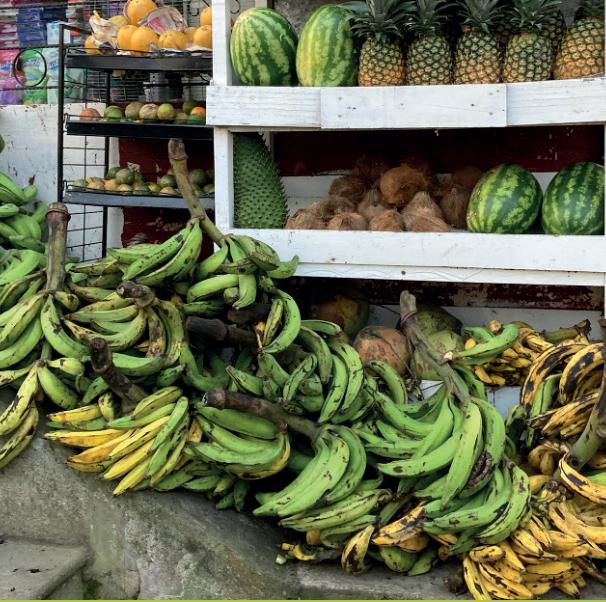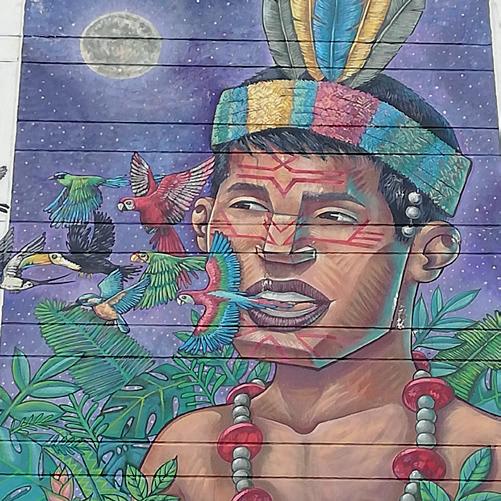
3 minute read
ecuador


Advertisement
Full name:
Capital:
Surface area:

Population:
Languages:
Religion:
Form of government:
President:
Official currency:
Republic of Ecuador
Quito, declared a World Heritage Site in 1970 for its best preserved historic center in Latin America
283 560 km
18 000 000
Spanish and other 14 indigenous languages: among them, Kichwa and Shuar are the most spread languages
90% christians and many other different religious groups
Presidential Republic
Guillermo Lasso, elected in May 2021, was a banker and businessman. He is promoting a neo-liberal politics, founded on extractivism
US dollar ($ have been used in Ecuador since 2000 and replaced the former currency, the Ecuadorian sucre)
did you know?
• Ecuador is the world’s largest exporter of bananas: up to 29% of all bananas exported worldwide are coming from this country


• Ecuador is one of 17 megadiverse countries in the world, having more biodiversity per square kilometer than any other nation.
• Ecuador’s national dish is roasted guinea pig, served with French fries!
• Since the country is crossed by the Equator, the sun rises and sets at the same time all year round, with 12 hours of day and 12 hours of night.
Population
According to the 2010 census, more than 70% of the population are mestizos, born from a mixed couple, where one of the parents belong to white people coming from Europe and the other belongs to the indigenous people of Ecuador. The rest of the population can be divided into indigenous people (7%), Afro-descendents (2%) and other minor groups. However, the Confederation of Indigenous Nationalities of Ecuador (CONAIE) estimates that indigenous people comprise between 20% and 45% of the total population. The Afro-Ecuadorian minority is mainly concentrated on the coast, where we find also the Montubios, officially recognized in 2010 as a different ethnic group as the product of the mix between Spanish people, indigenous people and afro-descendent people. The Sierra area is mostly inhabited by Kichwa, in the high Andes, and by mestizos in the lower areas. In the Amazon, also called “El Oriente” by the Ecuadorians, live many other indigenous groups, such as the Shuar.
Geography
The yellow colour represents gold and wealth but also the abundance and fertility of the land. The blue colour represents the clear colours of the sea and sky, while the red colour represents the blood shed by soldiers and martyrs during the war of independence. There is a sun in the middle of four zodiac signs that correspond to the months of March, April, May and June, during which the struggle for independence from the Spanish crown took place. Behind the sun stands Chimborazo, the highest mountain in the Ecuadorian Andes. The shield represents republican authority, while the condor symbolises the dominance, greatness and valour of the Ecuadorians.
Flag History pills
Ecuador was part of the Inca Empire until the Spanish arrived and claimed the country as a Spanish colony. For three hundred years the Spanish controlled Ecuador. In 1882 Ecuador gained independence from Spain.

Ecuador is bordered to the north by Colombia, to the east and south by Peru, and to the west by the Pacific Ocean. The country is crossed by the Equator, identified by a monument that passes right on the line of the parallel, called Mitad del Mundo, 26 km north from Quito.

Ecuador is divided into four climate zones. The Galápagos Islands, an archipelago of volcanic islands, identify the first one. The second one is the coast, characterised by an arid tropical climate in the south, but very humid in the north. The Sierra region is dominated by the 800 km long Andes Mountains. It is made up of mountains and volcanoes, some of them covered by glaciers, valleys and lakes. The main elevation point of the Cordillera is the Chimborazo volcano (6 310 m). The second highest is the Cotopaxi volcano (OD Team climbed it until 5 000m!!).
The Oriental or Amazonian region, also known as Oriente, extends from the eastern Andes mountain range in the west to the border with Colombia and Peru in the east, with an area of ca. 120 000 km2. It is characterised by a very humid tropical climate throughout the region all year round: rainfall in this region is constant.
In Ecuador the people say they have just two seasons. They call WINTER the wet season, when the temperatures are actually higher than in the rest of the year and when they have abundant rainfalls: this occurs between December and May. Upside down, they call SUMMER the dry season, characterised by low temperatures and low rainfall, which last from June to November. In general, we can say that we were feeling cold in the capital Quito (it is the second highest capital in the world with its 2 800m!) and we were feeling warmer in Pacto.










